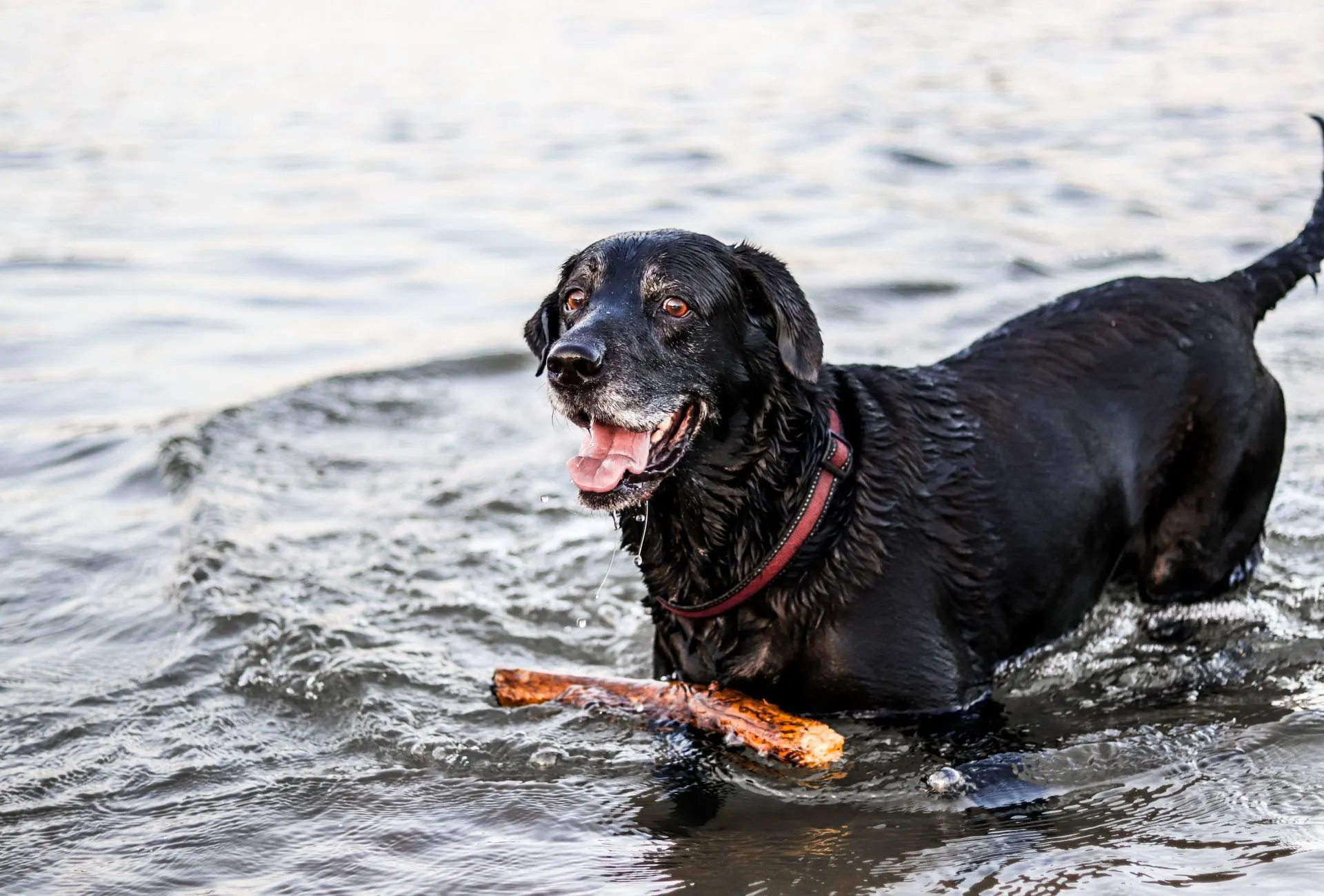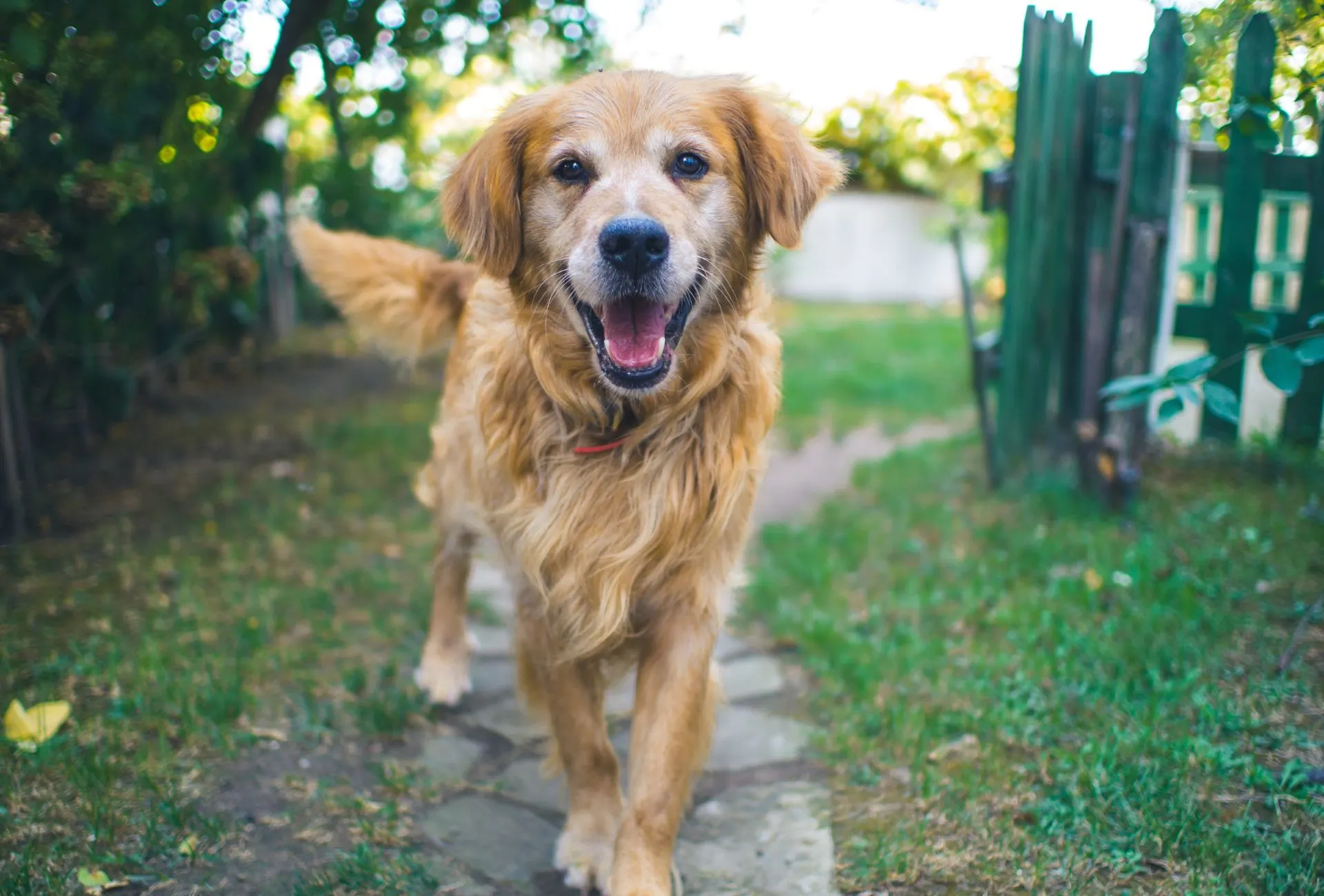Graying hair is not something we usually connect with a young puppy.
So when your dog’s fur suddenly changes color, it’s understandably a cause for concern.
Before we go deeper into the possible causes, let’s clarify what graying in dogs actually is and why it happens.
Like humans, dogs can develop gray hair as they grow older.
This usually happens around the muzzle but gray or white spots can occur across the whole body.
Hair color is determined by the type and the amount of melanin it has.
When the production of this pigment slows down or stops, individual strands of hair will come out in a lighter shade.
This is usually a normal process of aging and nothing you need to worry about.
Now let’s find out how that same process could take place in a young puppy.
A dog’s hair can turn white or gray due to age, genetics, health issues, stress, or skin conditions. Premature graying can occur in dogs even younger than 2 years of age.
5 Reasons Your Puppy is Getting White Hair
Age is definitely the most common reason for graying in dogs however if you have a very young dog, you can rule that one out.
While there are several different causes for white hair in puppies, most cases are related to genetics.
1. Genetics
When premature graying happens in humans, we commonly glance at the person’s parents as genetics are a big influential factor.
It also doesn’t hurt to take a closer look at your dog’s parents.
If possible, try to find out more about your dog’s relatives to see if the graying process matches in any way.
If their parents developed gray hair at a young age, chances are your dog will too.
Black dogs also tend to show gray-colored hair earlier than dogs with lighter coats.
Although this may be due to the fact that gray hair simply stands out on a dark coat and many owners never notice their yellow Labs graying.

2. Breed Predisposition
When researching for white hair in puppies, the Poodle frequently pops up, and for good reasons.
In dogs, there is something called progressive graying which is caused by a gene that can affect certain breeds like the Poodle, Irish Wolfhound, and Bearded Collies.
It is mostly seen in long-haired breeds probably due to the fact that the hair lightens as it grows and it won’t become long enough in short-haired breeds.
A short-haired dog might be born with the gene without showing any signs.
Unlike “normal” graying where hair strands grow gray from the beginning, progressive graying means that the hair cannot hold onto the pigment as it ages.
Because it’s a dominant gene, progressive graying can also be seen in mixed breeds.
3. Health Issues
Underlying health issues may be the reason your puppy is getting white hair which includes conditions such as hypothyroidism, liver disease, and kidney issues.
Among the underlying health issues that have graying as a symptom is hypothyroidism.
This is a condition where your dog’s thyroids produce an inadequate amount of hormones.
It’s a common condition in dogs that can cause weight gain, behavioral changes, and coat issues.
Hair loss mainly happens on the dog’s trunk and the back of the legs.
You may also notice an overall thinning of the hair and it may lose its shine.
Hypothyroidism is usually treated with oral medications that have to be taken for the rest of your dog’s life.
Furthermore, liver and kidney disease in dogs may result in hair graying or more commonly in abnormal-looking skin and hair.
However these are rarer and if you suspect that anything is wrong with your dog, definitely consider taking him to the vet.
4. Skin Conditions
Vitiligo is a rare skin condition in both humans and dogs and is characterized by patches of unpigmented skin.
Certain areas may fade while others completely lose their pigmentation.
These color changes are usually permanent however they are only cosmetic and are not harmful to your dog.
Most dogs diagnosed with vitiligo are less than 3 years old and there are some breeds that seem to be affected more than others.
The Rottweiler, Dachshund, German Shepherd, Doberman Pinscher, and Old English Sheepdog may be genetically predisposed however no gene has been identified to be responsible for vitiligo.
5. Stress
Stress had been linked to premature graying in humans before and it’s possible that it also plays a role in dogs.
A study from 2016 found that young dogs that are more anxious and impulsive are more likely to develop gray hair at a younger age.
The researchers photographed 400 dogs and asked their owners to fill out a detailed questionnaire.
Female dogs were also found to gray earlier more frequently than male dogs.
What Age Do Dogs Get White Hair?
On average, dogs start to develop white hairs around 5 years of age. This greatly depends on the breed as every breed enters its senior years at a different point.
Small breeds are considered senior dogs at around 10-12 years old while large breeds enter this stage at about 6 years old.
Large dogs tend to age more quickly and also have shorter life expectancy hence they earn their distinguished look earlier.
Even within the same breed, there can be differences and some dogs may develop gray hairs at only a few years of age while others never rock a gray muzzle.

How to Get Rid of Gray Hair on Dogs?
If you have ruled out medical issues, gray hair on your dog is not something you need to get rid of and is only a cosmetic issue.
I get that the senior dog look is not everyone’s cup of tea especially if it happens at an early age.
Getting constant remarks and having to explain to people that your dog is actually very young can get annoying.
Nonetheless, those little strands of gray make your dog truly unique and they are a part of them.
If your dog is struggling with anxiety, this may lead to premature graying.
Separation anxiety, for example, is a common behavior issue in dogs that can be extremely stressful.
By working with your dog through those fears, you may not only prevent further graying but will also greatly improve your dog’s quality of life.
Being in a constant state of fear or stress is harmful to the whole body and can cause health problems, such as urinary tract infections, high blood pressure, stomach ulcers, and more.
Your dog can feel stressed for a number of reasons:
- new environment
- loud noises
- change in routine
- new people
- addition or loss of a household member
Many owners tend to overlook that their own stress levels can impact their dogs.
We suggest that dogs, to a great extent, mirror the stress level of their owners.
Long-term stress levels are synchronized in dogs and their owners
The course of action will depend on your dog’s specific anxiety and your circumstances.
However, there are a few things that every owner can do to make their dog’s life more comfortable.
The greatest stress reliever in dogs is probably exercise.
Research your dog’s breed and make sure that they have sufficient physical exercise as well as mental stimulation every day.
Try to stick to a daily routine as best as possible so your dog knows what to expect.
Practice stress management by avoiding situations that make your dog nervous or uncomfortable.
If the issue persists or gets worse, consult a vet or behaviorist to get more personalized tips.
Disclaimer: This blog post does not substitute veterinary attention and does not intend to do so. I am not a veterinarian or pet nutritionist. If your dog shows any sign of illness, call your vet.
Sarwar Abdullah
Monday 5th of December 2022
Helpful article. My dog had black hair on the top of his head, he is now 8 months old and has white/grey hair on his head lmao he looks old.